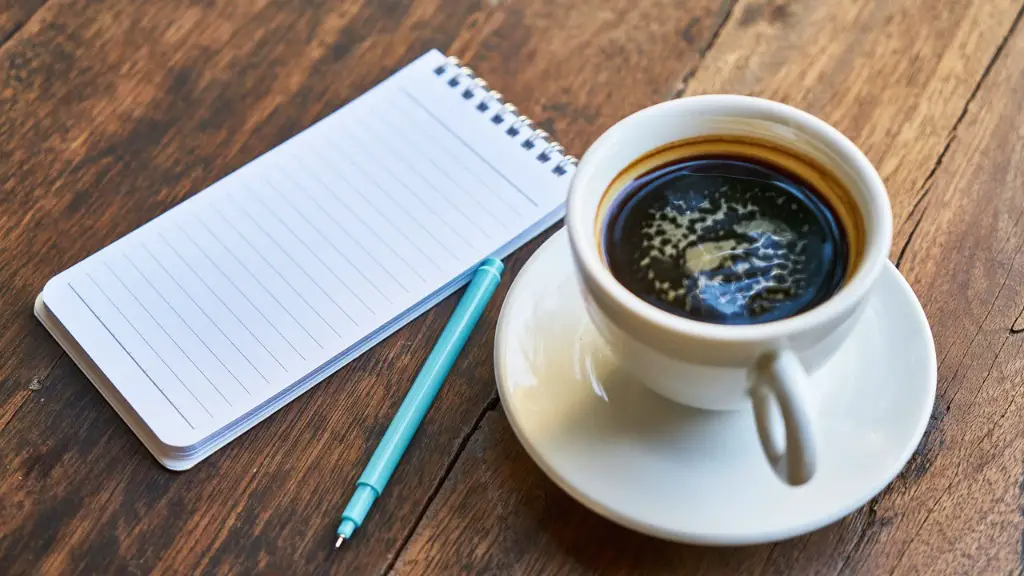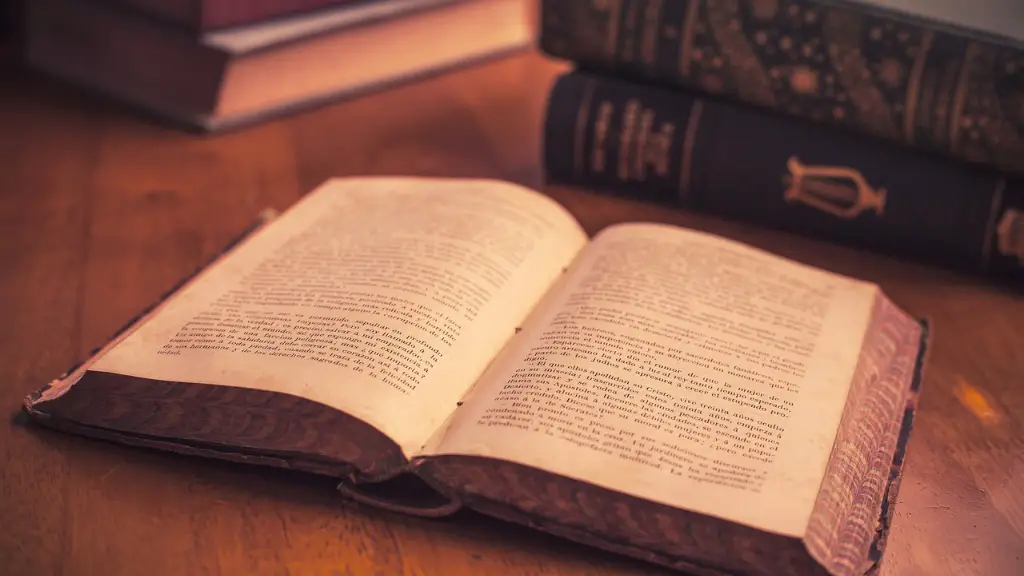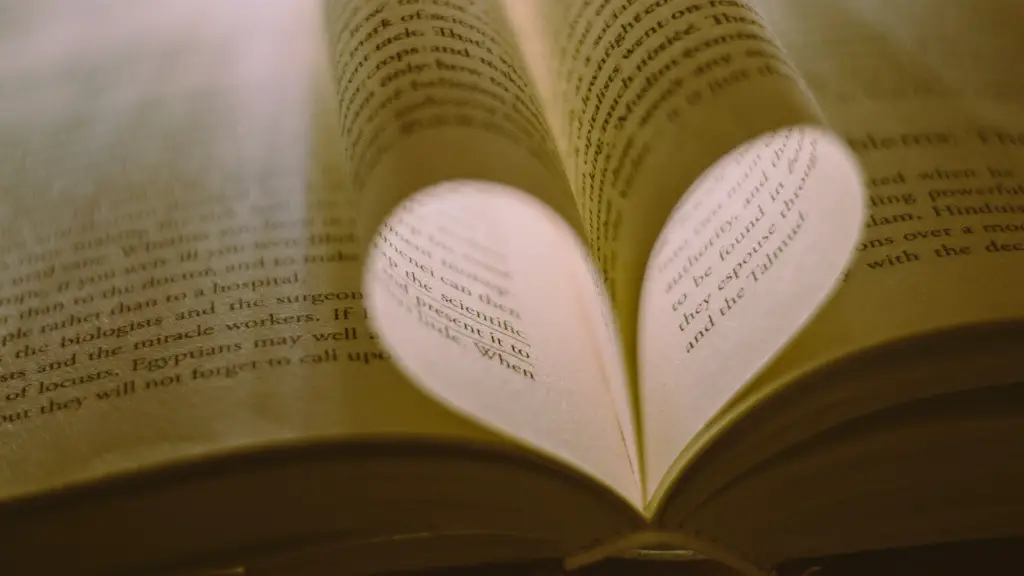In the world of poetry, sound has a unique power and presence. It can help to shape the reader’s experience of the poem and help them to gain a deeper understanding of the poet’s meaning. The use of sound in poetry can take various forms; from the sonic qualities of each line like the alliteration, assonance and cadence, to the rhythms created by the length of the lines and metre, to the sound of the words and their connotations. All of these elements form an integral part of poetry and each play an important role in creating an atmosphere and engaging the reader.
In attempting to understand the meaning of sound for a poem, it is important to consider the connotations associated with each word. These connotations enable the poet to express an emotion or create a particular atmosphere in the poem which can reach the reader on a deeper level. As the poet weaves their words, they use the sound of each word to construct the overall tone of the poem. An auditory image is created in the reader’s mind and this helps to convey the meaning of the poem. For example, the poet may use a certain metaphor or simile to create a certain sound or mood, such as a ‘dark night’ or a ‘lonely phone’, both of which suggest a feeling of desolation.
The level of engagement that a poem can generate is also heightened by the use of sound. Through the arrangement of particular sounds, the poet can engage the reader more directly and cause them to respond in a way that may not have been possible with written text alone. For example, repetition and the use of onomatopoeia can create a focus on the poem which allows the reader to explore the poem in more detail and fully engage with the meaning of the poem. The combination of sound, rhythm and imagery within a poem helps to draw the reader into the story that the poem is telling, which is why sound is such an important element of poetry.
One of the most powerful aspects of sound within poetry is the use of rhythm and metre. The presence of a distinct cadence or beat helps to create a sense of flow in the poem which leads the reader through the poem. Also, the rhythm can reflect the emotions or feelings of the poem, such as the sound of a mournful dirge or the energy of a battle cry. This helps to create an atmosphere of emotion which the reader can feel and connect with. The language of the poem is shaped by its metre and forms an integral part of the overall meaning and texture of the poem.
In conclusion, it can be seen that sound is an incredibly important element in poetry which helps to create atmosphere and engage the reader. From the connotations associated with each word to the atmosphere created by rhythms and metre, sound helps to bring the poem to life and allows the poet convey their message with power and clarity.
Alliteration
Alliteration is a poetic device that refers to the repetition of consonant sounds in the same line of a poem. Alliteration can be used to create a soundscape that helps to engage the reader. This can be especially effective when used in long narration or descriptions of scenes, as it helps to steady the pace of the poem and create a sense of flow for the reader. Alliteration also helps to bring focus to certain words and ideas, which helps to make sure that the poem’s meaning is communicated clearly.
The poet can also use alliteration to reinforce certain ideas and provide an extra level of emphasis. For example, in the poem “A Light in the Attic”, by Shel Silverstein, the alliteration of the words “so” and “see” emphasizes the idea of clarity and understanding, as the narrator urges his audience to “free your eyes and see”. Alliteration has the power to add a level of intrigue to a poem and connect the reader with the poem on a deeper level.
Alliteration also has the power to add a certain musicality to a poem. By repeating certain sounds, a certain melody is created which helps the poem to become more memorable and can help the reader to retain the poem’s meaning. This is especially true in the case of poems that use a lot of repetition, as the alliteration helps to add a layer of texture and interest to the poem.
The use of alliteration can also have a powerful effect on the tone of the poem. The poet can use alliteration to create a feeling of tension or urgency, as the repetition of certain sounds can add a sense of drama or excitement to the poem. This is especially true when the poet uses alliteration to represent a specific sound, like the sound of a gun shot or the roar of a crowd. Alliteration can therefore be a powerful tool for the poet in creating the perfect mood and atmosphere for their poem.
Overall then, it can be seen that alliteration can be an incredibly effective tool for the poet in helping to create an engaging and powerful poem that conveys the poet’s message in a unique and memorable way.
Assonance
Assonance is a poetic device which refers to the repetition of vowel sounds in a line of a poem. The presence of assonance helps to create a sense of continuity and flow throughout the poem, as the repeated sounds unite the various lines together. Assonance also helps to bring focus to particular words or ideas, which helps to make sure that the poem’s meaning is communicated clearly and effectively.
Assonance can also be used to create a musical quality to the poem which helps to engage the reader. This can be especially effective when the poet uses a pattern of assonance to create a specific melody which enhances the tone of the poem. For example, the use of assonance in the poem “A Midsummer Night’s Dream” by William Shakespeare helps to give a playful, lilting quality to the poem.
The presence of assonance can also be used to create a certain atmosphere within the poem. By choosing certain words and repeating certain sounds, the poet can create a mood which can be felt by the reader. This can be especially effective when the poet uses words that have a certain resonance. For instance, the use of assonance on words like “tears” or “night” can create a feeling of sorrow or desolation which the reader can connect with emotionally.
Assonance can also help to emphasize certain ideas and messages in the poem. Repetition of certain sounds can add an extra level of emphasis which amplifies the meaning of the poem. For instance, the repetition of the long “e” sound in the poem “To His Coy Mistress” by Andrew Marvell helps to emphasize the idea of urgency and love as the narrator pleads with his lover to “seize the present day”.
Overall then, it can be seen that assonance can be an effective tool in creating an atmosphere and engaging the reader. By choosing the right words and repeating certain sounds, the poet can create a unique and powerful poem that conveys their message in an effective way.
Cadence
Cadence is the rhythmic pattern of a poem which helps to create a sense of flow and continuity throughout the poem. A poem’s cadence can be determined by the length of each line, the rhythm of the words and the use of line breaks. These elements help to create an overall feeling of movement in the poem which leads the reader through the poem. Cadence also helps to emphasize certain words and ideas, as the reader’s focus is pulled in its direction.
The poet can also use cadence to create a certain atmosphere in the poem. By using a certain pattern of sound, the poet can create a certain feeling which is felt by the reader. For example, the use of a slower, more gentle cadence is often used to depict a tranquil and peaceful scene, while a quicker cadence can be used to portray a sense of menace or danger. By manipulating the cadence, the poet can help to create an engaging and memorable poem.
Cadence also has the power to emphasize certain words and ideas in the poem. By arranging the lines in a certain way, the poet can give extra emphasis to certain words which can help to add power to their meaning. Cadence can also be used to imitate a natural speech pattern, as the poet can create a rhythm which is indistinguishable from spoken language. This helps to make sure that the poem’s meaning is communicated clearly and effectively.
The use of cadence is especially important in longer poems, as it helps to provide a level of consistency and uniformity which helps to give the poem shape and structure. This can help the reader to become immersed in the poem and feel connected to it. Also, cadence helps to give the poem a certain musical quality which can engage the reader on an emotional level. Cadence therefore has a crucial role to play in the creation of a powerful and moving poem.
Overall then, it can be seen that cadence is an important element in the creation of poetry which can help the poet to convey their message effectively. By manipulating cadence, the poet can create an engaging poem which leads the reader through the poem and creates a powerful atmosphere.
Meter and Rhyme
Meter and rhyme are two poetic devices that are used to create a rhythmic structure within a poem. Meter refers to the use of regular patterns of stressed and unstressed syllables in a line which helps to create a sense of continuity and flow throughout the poem. Rhyme refers to the repetition of similar sounds within the poem which helps to give the poem a sense of unity and structure.
Meter and rhyme can play an important role in helping the poet to communicate their message clearly, as the presence of these elements helps to bring focus to particular words and ideas. Meter also helps to give the poem a certain musical quality which helps to engage the reader emotionally. Rhyme has the power to add an extra sense of clarity and structure to the poem which can make the poem more memorable and helps the reader to follow the poet’s message more easily.
The poet can also use meter and rhyme to create a specific atmosphere in the poem. By choosing certain rhythms and rhymes, the poet can create a certain mood which can be felt by the reader. For example, the use of a slow, measured rhythm can create a feeling of calm and serenity, while a faster meter can create a sense of excitement and urgency.
Meter and rhyme can also help to emphasize certain words and ideas in the poem. Repetition of particular syllables or rhymes can add an extra level of emphasis to certain words which amplifies their meaning in the poem. This is especially true when used in longer poems, such as epic or narrative poetry, as it helps to provide continuity throughout the poem.
Overall then, it can be seen that meter and rhyme can be important elements in the creation of a poem. By utilising these elements, the poet can create an engaging poem which conveys their message with clarity and power.
Connotations
Connotations are the implications or associations that may be associated with a certain word which adds an extra layer of meaning to the poem. Connotations can play an important role in a poem, as they can help to create a certain mood or atmosphere which is communicated to the reader. Also, they can help to emphasize certain words or ideas in the poem which helps to add power to the poem’s meaning.
The poet can use connotations to create a certain atmosphere in the poem which can be felt by the reader. By choosing particular words, the poet can give the poem a certain feel which can be connected to emotionally. For example, the use of connotations such as “gloomy” or





